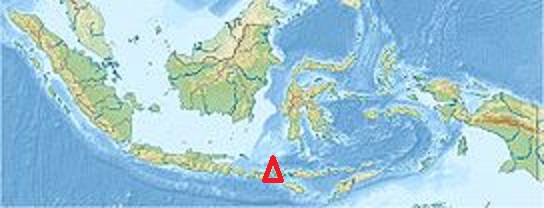| Events associated with the Tambora
eruption (red triangle) - proving causality is tough but ... |
 |
| The volume of the ejected rock, ash and
gases has been estimated to be 160 cubic kilometers (slightly
less than 40 cubic miles). As |
| Mount Tambora is still active (there
have been hundreds of small earthquakes, indicative of lava
moving, since April and the threat |
|
level was raised to 2 in August and to 3 in September) we will
respectfully note that the April 5-10 1815 eruption was more
powerful than |
| even the Baitoushan (border of North
Korea and China) event around 1000 AD and the Taupo (New
Zealand) event in 186. A cone of |
| rock almost a mile high was blasted into
the atmosphere. Besides local pyroclastic flows and tsunamis,
among the effects were: |
|
Less than 12,000 Indonesians immediately killed by lava or
poison gas; perhaps as many as 60,000 died of disease or
starvation; |
|
Planet wide cooling (from half a degree to a degree and a half)
- snow in June in many locations in North America so that the
period was |
|
described as the year without a summer; 1816 was the coldest
winter since 1601 when Huaynaputina erupted in Peru; |
|
a typhus epidemic started in southern Europe; a cholera epidemic
started in Bengal; there were catastrophic livestock and crop
losses |
|
world-wide; and there was rioting, arson and looting across
Europe and Asia. Simulations of a repeat of the Tambora event
today show |
|
human losses in the tens of millions in Indonesia alone with
economic damage of 8 trillion dollars inflicted on the rest of
the planet. |
|
© 2018 Peter F. Zoll. All rights reserved. |
